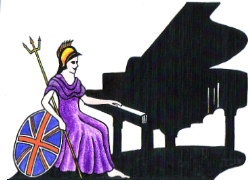Teachers, Accompanists and Piano Entertainers in the UK

UK Piano Page

37 Ranelagh Street
Liverpool, Merseyside L1 1JP
England
Dawsons caters for all musical styles and for all
Knightley Farm Workshop
Callingwood
Burton-on-Trent, Staffordshire DE13 9PU
England
St. Francis Hall
Baccabox Lane
Birmingham, West Midlands B47 5DD
England
Buying the right piano is often a difficult task,
13 The Broadway
Woodham
New Haw, Surrey KT15 3EU
England
Covering Kent, Sussex and Surrey from stores in
53 King Street
Cobham, Berkshire KT11 2LH
England
Music Festival for performers and guests Our 10th
18-06-2022 01:30PM
The Morecambe Bay Piano Group was set up to extend
11-12-2021 02:00PM
The Morecambe Bay Piano Group was set up to extend
08-01-2022 02:00PM
The Morecambe Bay Piano Group was set up to extend
12-02-2022 02:00PM